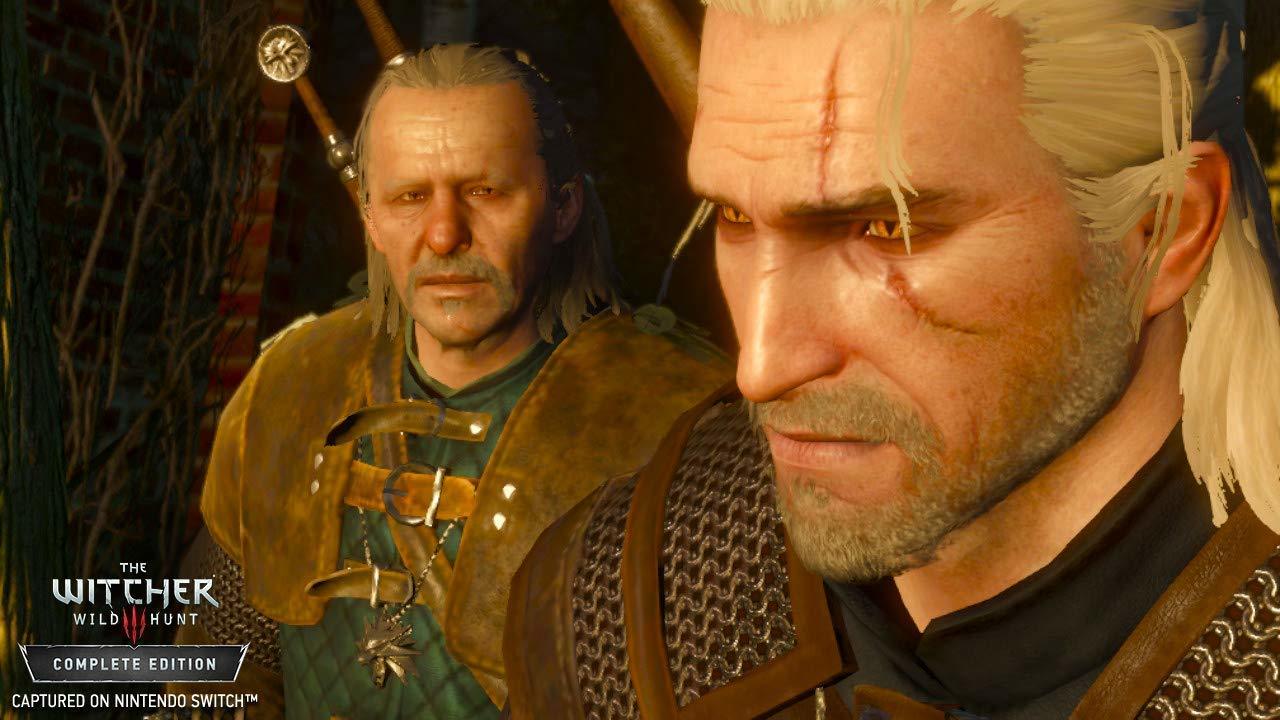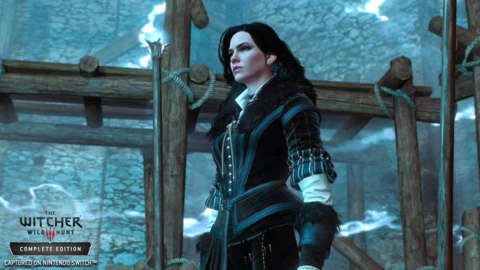The Witcher 3: Wild Hunt is arguably one of the best games of this generation. However, if you are unfamiliar with the books and previous games, the third entry can be a bit overwhelming. There are a ton of characters, a lot of backstory, and many things you should pay attention to as you're playing through Geralt and Ciri's adventure. If The Witcher 3 on Nintendo Switch is your first foray into the Northern Realms, here's everything about the story you should know before starting Wild Hunt.
For more on The Witcher 3: Wild Hunt on Nintendo Switch, check out our guide covering quick starter tips you should know. We also have a review on the way, but until then, check out our early thoughts about how the Switch port stacks up in the livestream video above.
Major Backstory Of The Witcher
Let's start with the basics: Geralt of Rivia is a Witcher, and a Witcher is a professional monster hunter. To become a Witcher, one is typically taken from their family at a young age and put through rigorous training--including the infamous Trial of the Grasses--where children are pumped full of alchemical ingredients. Most do not survive, and the ones that do gain superhuman reflexes, senses, and abilities. The trade-off is that once a Witcher completes their training, they are allegedly devoid of emotion. Witchers then traditional travel the world hunting monsters for money. But Geralt tends to bend the rules on that time-honored policy because he has a good heart.
So what makes Geralt so unique? Well, not much actually. He's not some chosen hero destined to save the world and he isn't more powerful than other Witchers. He's just trying to help his friends and, through fate, his destiny is inexplicably connected to the most powerful being in the universe, Cirilla Fiona Elen Riannon--don't worry, most characters call her Ciri for short.

Unlike the first two games, Geralt's father-daughter relationship with Ciri drives the plot of the third game. However, Ciri isn't Geralt's biological daughter. In fact, due to the trials they undergo, Witchers are infertile. So how did Geralt and Ciri meet? Before Ciri was born, Geralt lifted a curse on her father, a man named Duny. Instead of asking for money, Geralt invoked The Law of Surprise, which means the next surprising thing that happens to Duny must be surrendered to Geralt. To Duny's surprise, his lover--the Queen of Cintra--was pregnant with a girl.
Six years passed and Geralt returned to collect from Duny and his wife, but ultimately decided not to take Ciri. It wasn't until Cintra fell to the Nilfgaardian Empire a few years later that Geralt agreed to train Ciri at Kaer Morhen and hide her from Nilfgaard.

You might be wondering: "Why did Geralt hide Ciri from Nilfgaard?" The explanation is linked to Duny. As it turns out, his real name is Emyr Var Emries, aka the Emperor of Nilfgaard. Whether Ciri likes it or not, she is the heir to Nilfgaard's throne, and she has a birthright to fulfill.
These events bring us up to where the first book in the Witcher series, Blood of Elves, begins. Ciri first trains with Geralt and then with a sorceress named Yennefer (more on her later) before getting separated from them. On the run from Nilfgaard and other nefarious parties, Ciri joins a gang for a good portion of the book series. Meanwhile, Geralt, who has adopted a father-like role towards Ciri, is trying to track her down.
There are a lot more details around these characters in the books, so if any of this interests you, we highly recommend checking them out. We don't want to spoil the final events of the books in case you decide to read them, so we'll be vague. But when the series concludes, Ciri inevitably disappears. Despite being such an essential character in the books, she isn't present in the first two Witcher games. What drives the events of The Witcher 3 is that she has returned, and now it's up to Geralt and Yennefer to find her at the request of her father, Emyr.

So who is Yennefer then? If Geralt is Ciri's father figure, then Yennefer is her maternal one. In the short story titled "The Last Wish," Geralt and his good friend and Troubador Dandelion come across a Djinn (or genie) during their travels. After it attacks Dandelion, Geralt takes him to the nearest town to get aid from a sorceress. That sorceress is none other than Yennefer of Vengerberg. She decides that she wants to tame the Djinn and harness its powers. Of course, this doesn't go as planned, and the Djinn terrorizes the city. Geralt deals with the Djinn, and in the process, becomes romantically involved with Yennefer. Geralt also uses the Djinn to make a wish, but Witcher series author Andrzej Sapkowski never specified Geralt's last wish. However, in the context of The Witcher 3, Geralt's final request seems to have been for him and Yennefer to be together forever--no matter how rocky things get.
It should be no surprise, but things do get rocky. At the start of The Witcher 1, Geralt loses his memory and becomes romantically involved with another sorceress named Triss Merigold, a good friend of Yennefer. Unfortunately, Geralt doesn't know any better, and he spends a lot of The Witcher 1 and 2 getting to know her. So, if Yen seems a bit cold to Geralt at the start of The Witcher 3, that's why. Like Ciri, Yennefer isn't in The Witcher 1 and 2; she's apparently off doing her own thing.
Triss Merigold of Maribor is the sister-like figure to Ciri. When Ciri was holed up in Kaer Morhen with a bunch of disgruntled Witchers, Triss took care of her. While Geralt and his Witcher pals taught Ciri how to fight, Triss taught her how to behave in polite company. But aside from her relationship to Ciri, one of the more important details about Triss is that she's genuinely in love with Geralt.
If you haven't figured it out yet, there's a lot of history between Yenn, Triss, and Geralt, so keep that in mind when you start The Witcher 3. Remember: Yenn and Triss are friends, and they do talk, so don't be too reckless with your words as you interact with them.
Geralt, Ciri, Yennefer, and Triss may be the most important characters in The Witcher 3, but they certainly aren't the only notable characters. It would take far too long to go through everyone but, below, we highlight some noteworthy people:
- Dandelion: Geralt's best friend and the big-mouthed bard
- Zoltan Chivay: A good-natured dwarf and friendly ally.
- Vernon Roche: The Commander of the Temerian Special Forces known as the Blue Stripes
- Keira Metz: A sorceress forced into hiding.
- Philipa Eilheart: The leader of the Lodge of Sorceresses, a mostly defunct group of powerful and influential Sorceresses. King Radovid blinded her.
- King Radovid: The tyrannical ruler of Redania who has gone mad with power.
- Eskel, Lambert, and Vesemir: The three remaining Witchers--not including Geralt-- from the School of the Wolf headquartered at Kaer Morhen.
- Crach an Craite: The Jarl of Skellige.
- Cerys an Craite: Crach's daughter
- Roach: Geralt's horse, but it's not one particular horse. It's just the name Geralt gives to every horse he rides.
If you want to learn more about these characters, we recommend checking out the in-game glossary. However, you should be able to get by with what's detailed above.
Starting The Witcher 3 -- Here's The State of the World
That's a ton of background information, so you're probably wondering where does The Witcher 3 fit into all this. The game primarily takes place on the Temerian-Redanian border and Skellige. Your goal is to find Ciri before a mysterious group called the Wild Hunt does. However, the region is currently locked in a brutal war between the Temerians and the Nilfgaardians. Battlefields are piled high with corpses, and many of the common folk have been displaced.
The politics in these games can be tough to follow, but we like to think this was intentional for a few reasons. First, Geralt, being the good Witcher he is, shouldn't meddle with politics--emphasis on "shouldn't." Second, there are no good guys or bad guys in the world of The Witcher; it's kings and queens mobilizing the poor to fight for them. Finally, real-world politics are messy, and for this world to feel believable, the politics present should be dirty as well. You could play through this whole game and still not understand why Nilfgaard is at war with Temeria, and that's okay. The Witcher 3 is about Geralt, Ciri, and their friends. The more context you have, the better, but to some extent, being confused about the state of the world is an integral part of the experience.
Mortal Kombat 1 Homelander Official First Look Trailer Playing Fallout 4 In 2024 Firearms Expert Reacts to Helldivers 2 PART 3 What's Become Of Batman Games? | Spot On Apex Legends: Official Upheaval Gameplay Trailer SteamWorld Heist II | Gameplay Deep Dive Trailer Best Fallout 4 Mods For People That Don't Care About Settlements Honkai: Star Rail - "If We Had Wings" | Myriad Celestia Trailer Fortnite - Official Star Wars Lands Update Event Gameplay Trailer Wuthering Waves | Resonator Showcase | Lingyang — Debut LEGO Fortnite | Star Wars LEGO Pass: Rebel Adventure Official Explainer Video RKGK | Official Release Date Gameplay Trailer
Please enter your date of birth to view this video
By clicking 'enter', you agree to GameSpot's
Terms of Use and Privacy Policy
Though one thing to keep in mind is that ordinary folk typically don't trust Witchers, sorceresses, and non-humans simply because they're different. The so-called free state of Novigrad is currently in the middle of a bloody witch hunt. Sorceresses and non-humans are being burned at the stake. The surviving dwarves, elves, and sorceresses are being pushed into ghettos or forced to go into hiding. While there's no law against Witchers yet, most people are scared or intimidated by Geralt when they see him.
The hatred for non-humans and sorceresses can be traced to the Church of The Eternal Fire and King Radovid. The Eternal Fire was founded in Novigrad, and its followers believe that the Eternal Fire will guide them through hardships. They also hate non-humans, sorceresses, and monsters. While King Radovid seems relatively indifferent towards non-humans, he specifically hates sorcerers and sorceresses, especially one named Philipa Eilhart. Because of this, King Radovid turns a blind eye to the Church of Eternal Fire's intolerant behavior.
Presumably, as a result of the hatred and violence brewing from this social climate, the Lodge of Sorceresses is a shell of its former self. The once-powerful group of sorceresses played a significant role in the realm's politics. Although some of their tactics were shady, many of them advised kings and influential people. Currently, its members are dead or in hiding.
However, the game doesn't begin south of the Novigrad and Redanian border. After a lengthy tutorial segment in White Orchard, you start your quest in Velen; a war-torn region commonly referred to as No Man's Land. Here you will find a series of small, impoverished villages under the watchful "protection" of the Bloody Baron. Meanwhile, Geralt's friends are scattered around the region. Triss was last seen in Novigrad; Yenn, after your short introduction to her, is chasing up leads in Skellige; and Dandelion is missing.
As Geralt, you must search for Ciri and your friends while navigating the world's tumultuous political climate and hidden conspiracies. There's much to uncover, but everything we've detailed should be more than enough to prepare you for the massive journey ahead.






